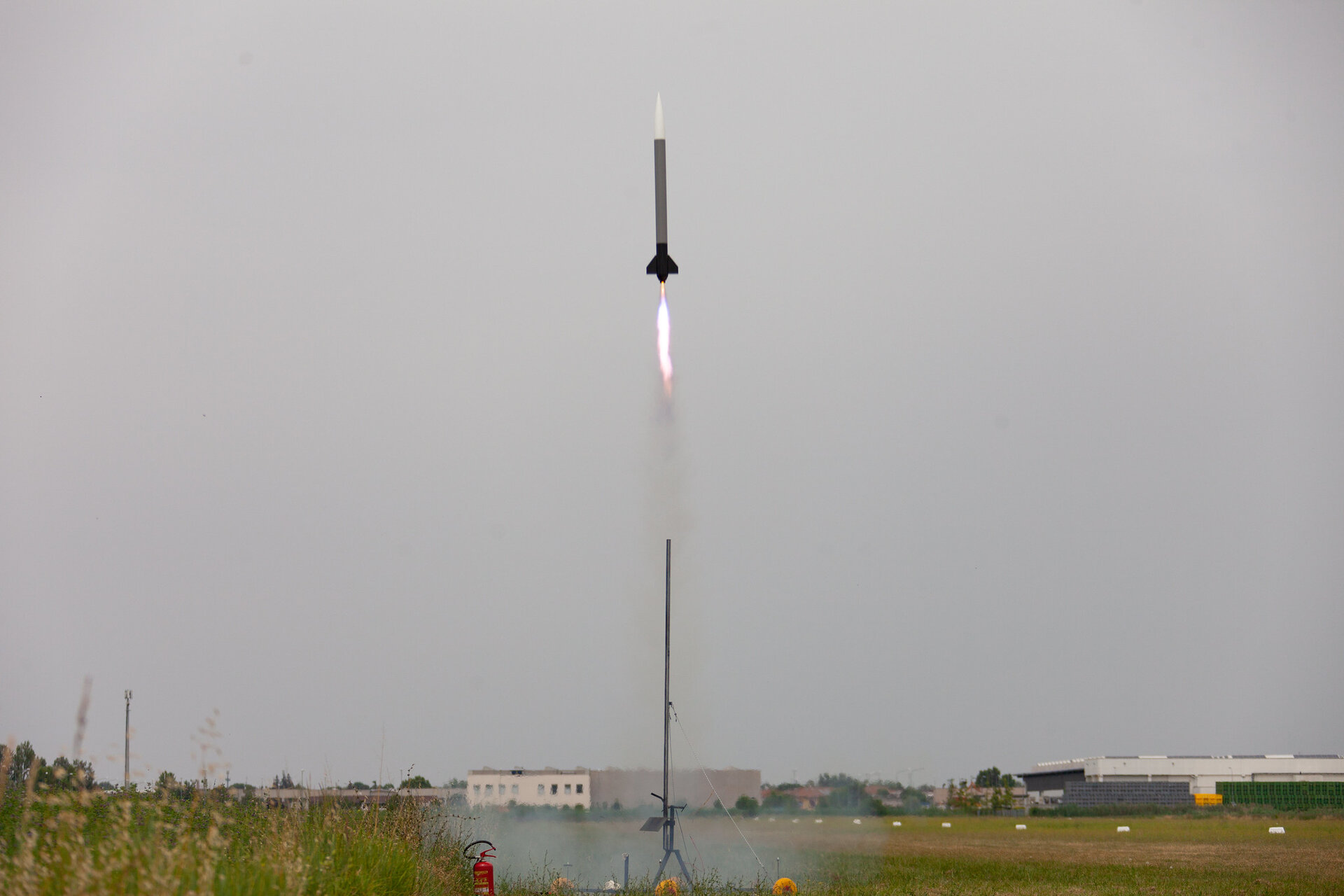One week till lift-off: Meet the participating teams!
From 26 to 30 June, 26 teams will travel to Granada (Spain) to compete in the 2023 European CanSat Competition. The 26 teams will include the winners of the national CanSat competitions in Austria, Belgium, Canada, Czech Republic, Denmark, Finland, France, Germany, Greece, Hungary, Ireland, Italy, Latvia, Luxembourg, the Netherlands, Norway, Portugal, Poland, Romania, Spain, Sweden, Switzerland, and the United Kingdom, in addition to teams from Slovenia and Slovakia selected directly by ESA, and a guest team from Japan. The competition will be hosted on ESA’s behalf by Parque de las Ciencias and Producciones Científicas y Técnicas (PCyT). The start of the launch campaign is approaching soon so it's time to introduce the teams and their chosen missions to you.
The primary mission of each team is to take a temperature and pressure reading once every second. The secondary mission was decided by the teams themselves. We are happy to see a wide variety of mission experiments. Let's introduce them to you!

The teams’ secondary missions are:
- WerndlExplorer, Austria: To gather information about the landscape of an exoplanet. Pictures will be analysed using Artificial Intelligence. In addition, the CanSat will feature a mechanism to dispense seeds to allow autonomous cultivation of crops.
- Ethera, Belgium: To alter the CanSat's descent velocity using open airbrakes, in addition to estimating the position of the CanSat using two beacons on the ground.
- Contrail, Canada: To detect and monitor holistic wildfire for firefighter operations. With the prominence of wildfires around the world, it has become imperative to determine a method of quickly and cheaply identifying and tracking fires.
- Project SkyFall, Czech Republic: To gather data about planetary conditions crucial for extraterrestrial life support and development and to determine whether the targeted planet is habitable or not.
- CatSat, Denmark: To precisely track the cansat using pressure, GPS, accelerometer and gyroscope data while also collecting environmental data such as humidity and light.
- muCan, Finland: To determine at which altitudes carbon capture is most efficient as a way to combat climate change. In addition, muon intensity will be measured to research its correlation to stratosphere temperature.
- AstroPanthéon, France: To develop the smallest system capable of capturing bacteria floating in the air, such as the Pseudomonas syringae, which has the power to trigger rain. In addition to closely analyzing them to understand their atmospheric influence.
- Astra Aether, Germany: To make an analysis of fire hazards in natural areas using AI-based distinction between natural areas and streets/buildings and camera recordings in the visible and infrared spectrum. In addition, the CanSat is equipped with a reaction wheel that stabilises its vertical rotation to improve the usability of the camera data.
- V-SPACE, Greece: To ensure the privacy of communications and ensure end-to-end encryption. The CanSat could belong to a community of people and provide them with secure and private exchange of messages, in addition to aerial monitoring of the area using a camera and the recognition of possibly dangerous situations.
- MoSat, Hungary: To measure UV index. Measuring the UV index has multiple uses. UV measurements are commonly used for weather forecasts. The UV index also provides a forecast of the expected risk of overexposure to UV radiation.
- Spudnik, Ireland: To provide valuable data for atmospheric research, environmental monitoring, and climate studies by measuring aspects such as gas composition and humidity.
- Cosmochill, Italy: To measure Volatile Organic Compounds (VOC) in the atmosphere with our precise system, which can measure their presence in the parts-per-billion order (ppb).
- Pheasant, Japan (guest team): To save lives in disasters by collecting data and communicating data to assist rescue efforts and therefore minimise damage caused by disasters.

- Meteo, Latvia: To deploy a “solar sail” from the body to test a technological concept of complex mechanical system in a limited space. Additionally, this "solar sail" will function as an innovative recovery system. The second part of the mission is to deploy a NanoSat from our CanSat to get two different trajectories from one launch.
- SevenToHeaven, Luxembourg: To track the geographical position by means of an installed GPS sensor and study the magnetic field of the Earth.
- Terra, Norway: To land the CanSat with custom-made landing gear and use an Archimedes screw to transport soil into a self-made soil sensor that measures the humidity of the soil with capacitance.
- Dr0p, Poland: To perform targeted landing and create a 3D model of flight path.
- EDER SAT, Portugal: To build a digital surface model (DSM). This digital surface model is an accurate 3D representation of the surface of a planet or satellite. It is built from data collected by cameras and other sensors aboard and is critical to ensuring the safety and success of interplanetary missions.
- TOMIS 9, Romania: To monitor dangerous areas affected by possible nuclear accidents, anthropic activities, earthquakes and other natural disasters.
- GHSat, Slovakia: To detect changes in gamma dose rate in the atmosphere, meanwhile measuring NO2 concentration to study the correlation between the two measurements.
- VegaSat, Slovenia: To attempt a guided landing with 25m accuracy using three positional radio beacons.
- FDSAT, Spain: To diagnose viability of life on other planets in anticipation of human species possibly requiring alternative habitats on other planets and celestial bodies in the future.
- Homestead, Sweden: To examine various qualities in the atmosphere, crucial for human habitability and sustainability of life for longer periods of time.
- Plantsat, Switzerland: To release plant seeds and monitor growth thanks to a camera and various sensors.
- MultiSat, The Netherlands: To split the Cansat into two separate parts and launch them in opposite directions after the nylon thread melts. This spitting mechanism can be used to explore and gather data over larger surfaces on new planets or asteroids.
- Phoenix 2, United Kingdom: To analyse dust to detect microbial life on a distant planet by sampling surface dust using a bespoke fan and reaction chamber.
We look forward to how the missions will play out during the Launch Campaign. We wish all the participating teams good luck during the final week of preparation and look forward to welcoming you in Granada on 26 June.


